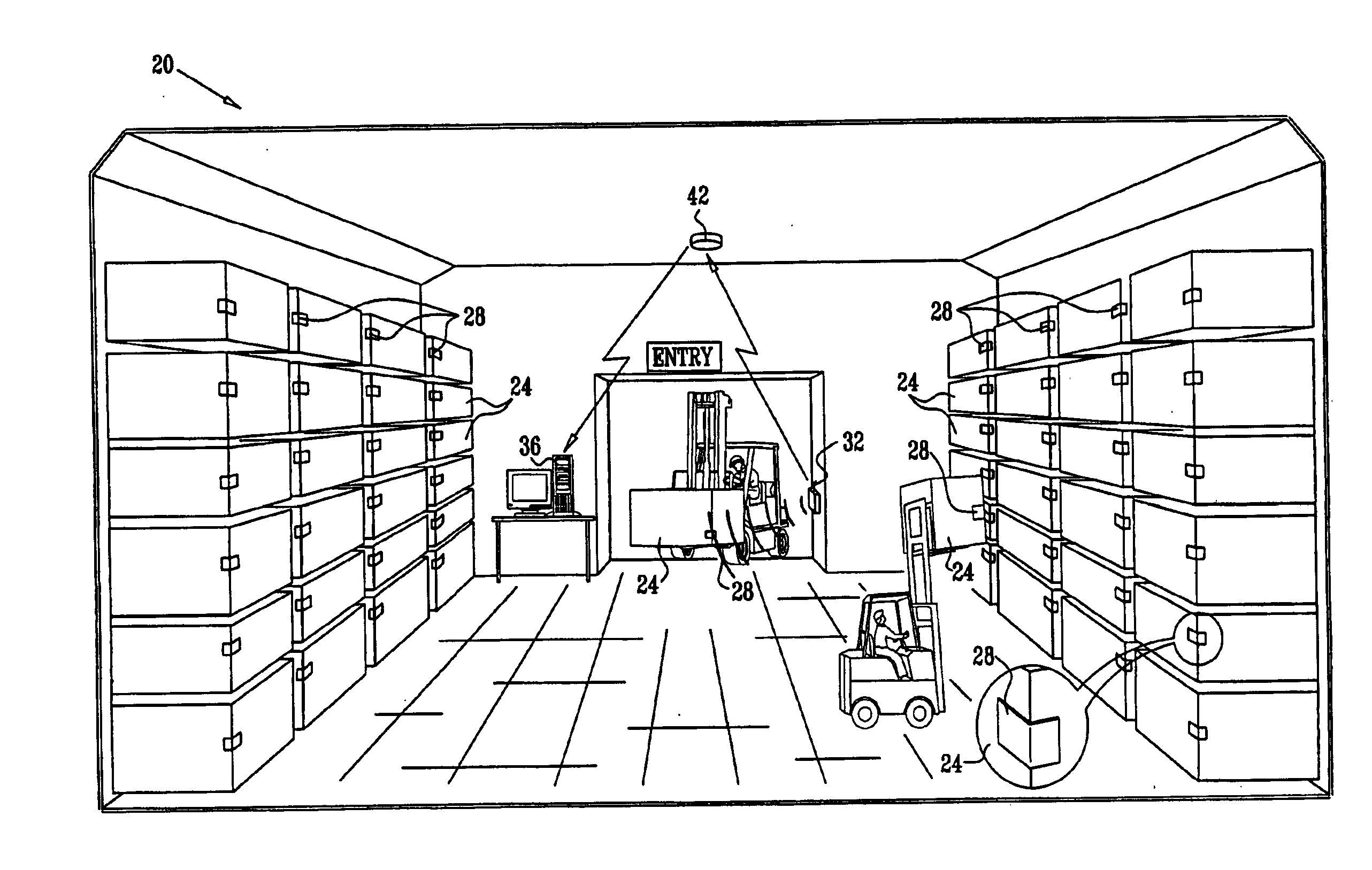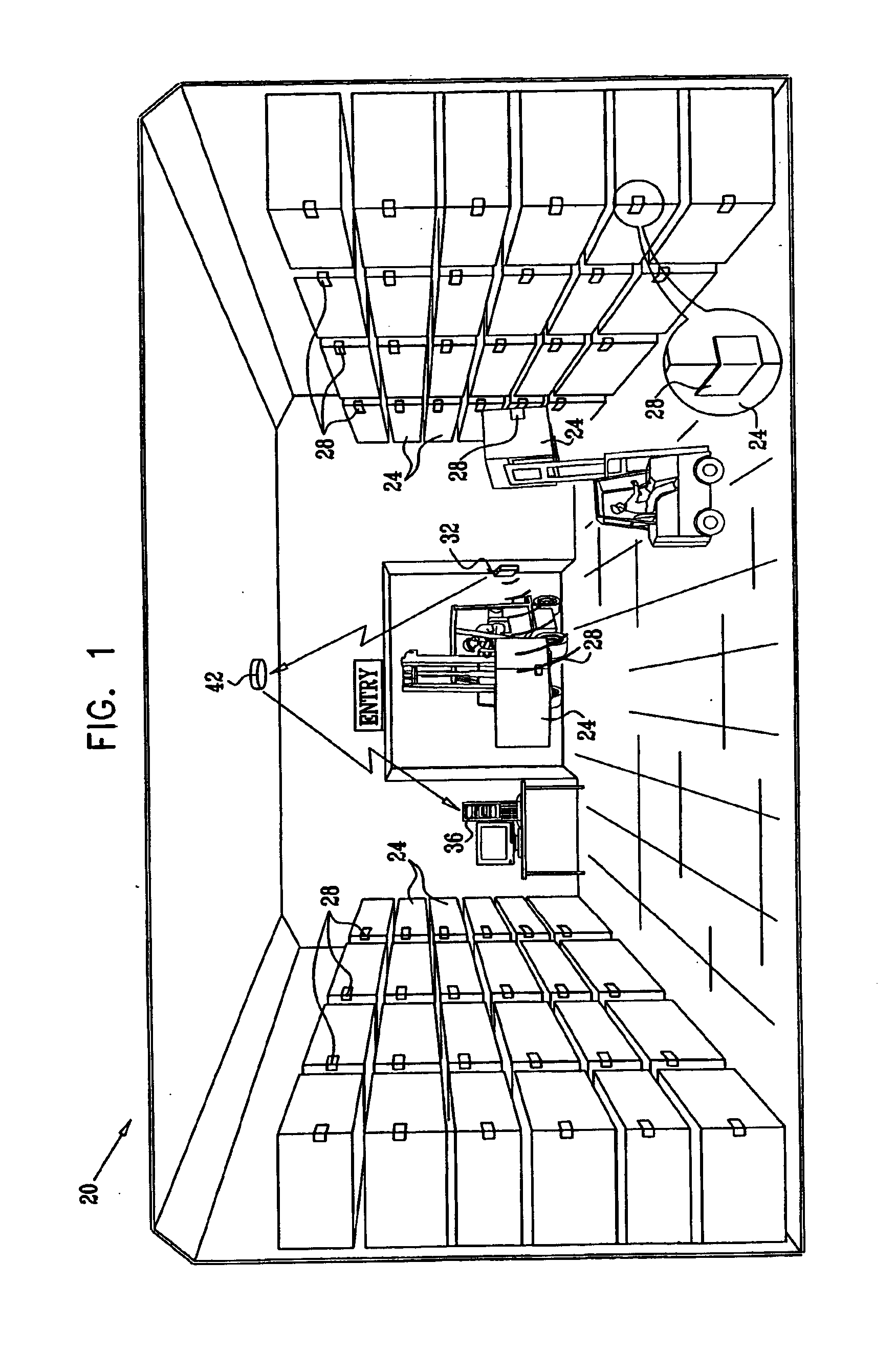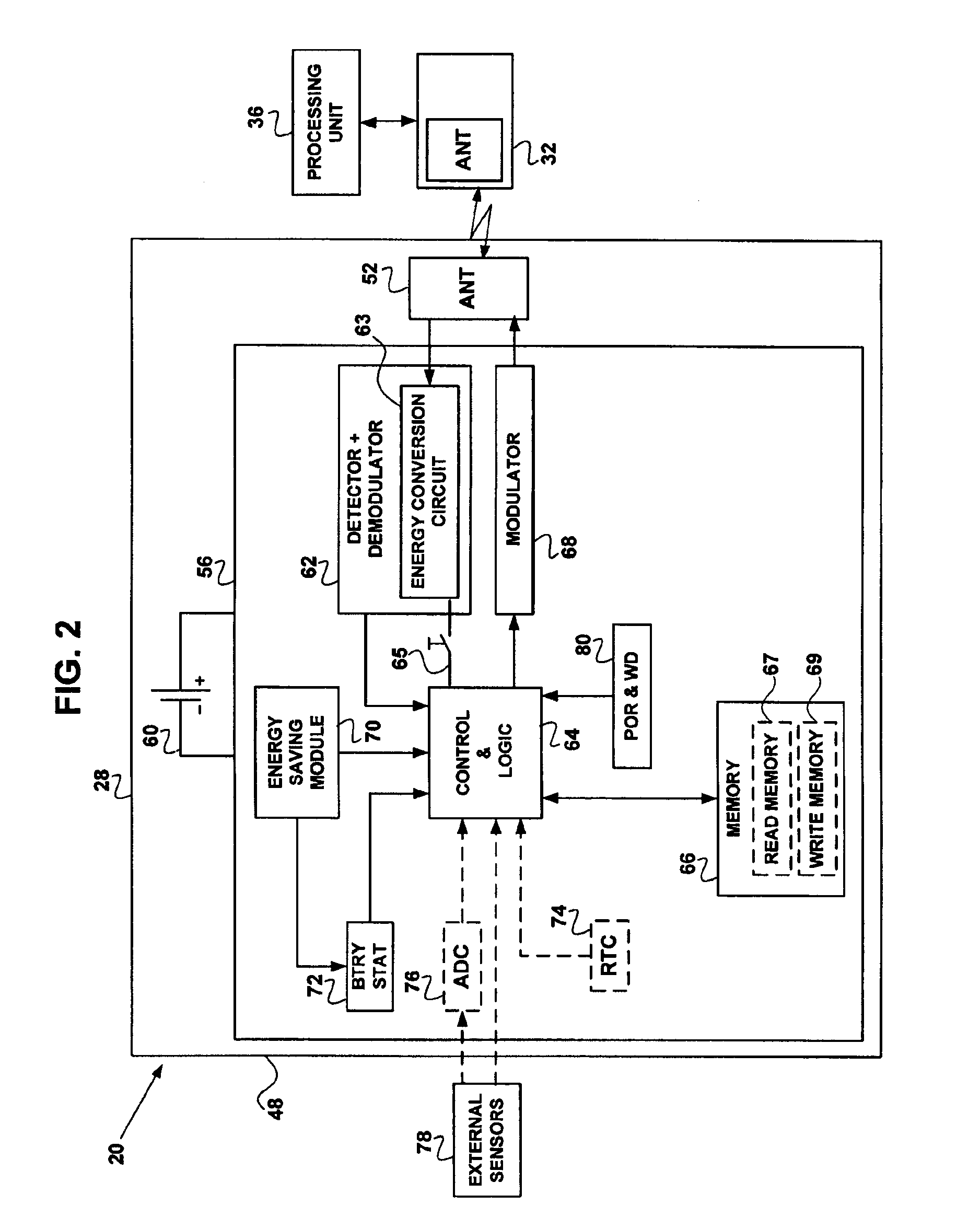Battery-assisted backscatter RFID transponder
a backscatter and transponder technology, applied in the field of radio frequency identification (rfid) systems, can solve the problems of reducing the achievable communication range of the transponder and the amount of energy available, and achieve the effect of reducing energy consumption and energy consumption
- Summary
- Abstract
- Description
- Claims
- Application Information
AI Technical Summary
Benefits of technology
Problems solved by technology
Method used
Image
Examples
implementation examples
[0251]Reference is now made to the following two examples, which together with the above descriptions illustrate the invention in a non-limiting fashion. The following table provides an exemplary specification of a transponder 28, in accordance with an embodiment of the present invention: TABLE-US-00003 Parameter Specification Operating frequency 860-880 and 902-928 MHz Frequency hopping operation As authorized for the reader Optimized antenna RCS .sigma. / .lamda.sup.2=1 m.sup.2 for a 10 times. 10 cm label area Optimized antenna .DELTA.RCS .DELTA.sigma. / .lamda.sup.2=0.9 RCS Free space read and write 30 m range with reader effective isotropic radiated power (EIRP)=4 Watt Reader to transponder ASK, DSB, SSB, FSK or PSK modulation Transponder to reader ASK or subcarrier PSK modulation Reader to transponder data 4.8-128 kbit / sec rate Transponder to reader data 4.8-512 kbit / sec rate Reader to transponder coding NRZ, Miller, PIE or PWM Transponder to reader coding direct or subcarrier, NRZ...
PUM
 Login to View More
Login to View More Abstract
Description
Claims
Application Information
 Login to View More
Login to View More - R&D
- Intellectual Property
- Life Sciences
- Materials
- Tech Scout
- Unparalleled Data Quality
- Higher Quality Content
- 60% Fewer Hallucinations
Browse by: Latest US Patents, China's latest patents, Technical Efficacy Thesaurus, Application Domain, Technology Topic, Popular Technical Reports.
© 2025 PatSnap. All rights reserved.Legal|Privacy policy|Modern Slavery Act Transparency Statement|Sitemap|About US| Contact US: help@patsnap.com



